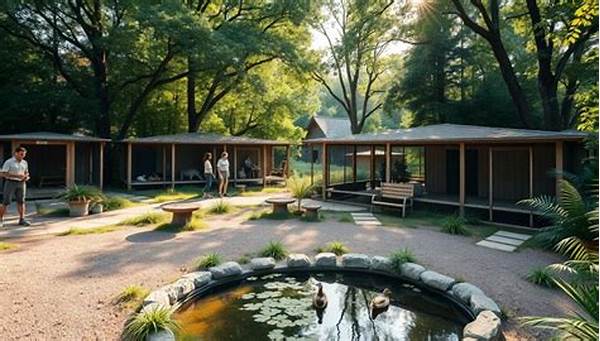In a world where animal welfare is taking center stage, the emergence of animal rehabilitation centers is a beacon of hope and sanctuary for our furred, feathered, and scaled friends in need. Imagine stepping into a place where compassion meets skill, where dedicated professionals don the roles of healers, nurturers, and saviors. The wave of animal rehabilitation center developments is transforming these sanctuaries into cutting-edge facilities equipped with the latest technology and methodologies designed to uplift the lives of animals.
Read More : Snorkeling On The Great Barrier Reef In Australia
Welcome to the vibrant world of animal rehabilitation center developments, where curiosity piques with every success story, and the emotional tug at our heartstrings turns into a call for action. Gone are the days when animal rehabilitation centers were merely places of temporary refuge. Now, they are bustling hubs of innovation and expertise, balancing between science and art, and allowing animal lovers to witness incredible recoveries. Whether it’s a cheeky squirrel with a sprain or a majestic eagle on the mend, these centers are redefining the paradigms of animal care.
The Rise of Centers: A New Dawn
The rise of animal rehabilitation center developments is nothing short of a revolution in the field. Across the globe, these centers are garnering attention not just for their noble mission but for their creativity, technology, and community engagement. In the U.S. alone, reports suggest a 15% annual increase in the establishment of new centers.
Renowned centers are often equipped with state-of-the-art facilities like hydrotherapy pools for canine patients or advanced flight simulators for birds of prey. These tools are not just novelties; they are necessities that have proven to expedite healing times and boost success rates. Interviews with leading center veterinarians reveal that innovation is key in enhancing rehabilitation outcomes.
Community Involvement: A Collective Effort
The community plays an indispensable role in animal rehabilitation center developments. Volunteers and donations are the lifeblood of many of these centers. Engaging local communities through educational workshops, fun runs, and open days, these establishments build bridges between humans and animals.
Imagine attending a local BBQ fundraiser where a rehabilitated parrot steals the show with its quirky antics. Such events not only raise funds but also promote awareness and education on the importance of wildlife conservation. Testimonials from attendees often highlight how these centers ignite a passion for animal welfare in the most unexpected hearts.
Innovative Treatments and Therapies
In the field of animal rehabilitation, innovative treatments are constantly being explored. With developments in Veterinary medicine, many centers now employ therapies that were once exclusive to humans. Techniques like acupuncture, laser therapy, and even custom-made prosthetics are becoming commonplace.
These cutting-edge treatments are frequently backed by research and anecdotal success stories. A notable case is Pepe, a once-hopeless kangaroo who now hops around joyfully thanks to a custom-fitted leg brace. Such stories are pivotal, showcasing the transformational power of modern veterinary science and the determined spirit of animal rehabilitation professionals.
Objectives and Benefits of Rehabilitation
Animal rehabilitation center developments aim to restore, rejuvenate, and release animals back into the wild or provide them with a life of comfort in captivity, where wild release isn’t possible. The objectives are manifold and can be grouped as follows:
Read More : News On Rare Animal Conservation In National Parks
Embracing the Future with an Eye on Conservation
As the future unfolds, the focus remains on sustainable practices. Animal rehabilitation center developments are not just about rescuing and healing; they are inherently tied to broader ecological objectives that aim for harmony between human activities and wildlife.
Challenges and Future Prospects
Like any significant endeavor, animal rehabilitation centers face challenges such as funding deficits, resource limitations, and increasing demand for services. Yet, the passion driving these centers is unwavering. Advocates constantly call for more substantial policies and societal support to bolster these essential services.
Key Developments and Their Impact
In conclusion, animal rehabilitation center developments represent a promising stride towards a more humane and compassionate world. They highlight our collective responsibility for the beings with which we share our planet, encouraging an empathetic and informed approach to wildlife care. As innovations continue to flourish and communities rally in support, the future of animal rehabilitation appears not only hopeful but sensationally transformative.
Final Thoughts on Rehabilitation and Conservation
Animal rehabilitation centers are not merely facilities; they are lifelines bridging the gap between injury and recovery, helplessness, and hope. The developments we’ve observed are just the tip of the iceberg, setting the stage for even greater advancements in the field.
As each of us looks forward to a future brimming with technological wonders and compassionate endeavors, let’s not forget the heart of these developments—the animals. With dedication, support, and the relentless pursuit of innovation, we can ensure they thrive in a world that respects and cherishes every living creature. So, let’s get on board with these changes, support our local centers, and be a part of this revolutionary journey.


